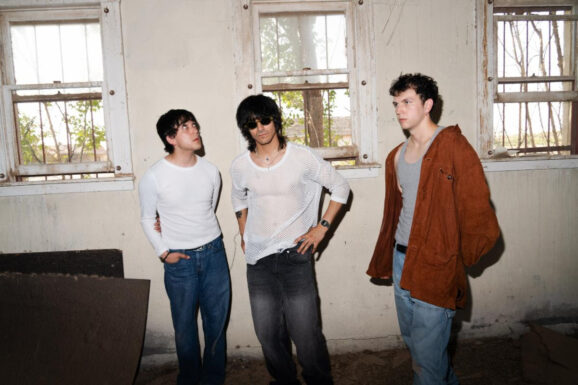Calling from his New York City home, acclaimed guitarist Lee Ranaldo admits that his latest solo album, In Virus Times (released in November via Mute Records) wasn’t even initially meant for public consumption at all. “When I made these recordings, I wasn’t really making them with the idea of releasing them as a record – that just kind of happened later,” he says, “so the whole process has been so natural, in a way.
“I made the recordings because it was the end of 2020, and that year was just so insane with COVID and everything getting canceled,” Ranaldo continues. “My previous record [2020’s Names of North End Women] came out a week before COVID started, and everything got dashed. I hardly played much music that whole year. I just really couldn’t motivate myself. I ended up doing a lot of other stuff, more visual art stuff. But by the fall I was getting into [music] again. I was playing this stuff, and I set up some microphones to record it properly, just for my own self, basically.”
Those laid-back home recording sessions captured the somber mood that COVID had brought to the world. Although Ranaldo first found fame playing edgy, roaring riffs with Sonic Youth, on this album he shows a gentler side with minimalistic, acoustic guitar-focused instrumentals. Divided into four parts, In Virus Times is a reflection of, and refuge from, the troubled times in which it was created.
“It was just such a weird time,” Ranaldo says of the months that spawned In Virus Times. “As I said, I hadn’t been playing much, so when I picked up the guitar to start to develop the stuff that became that record, I kind of felt almost like a beginning player. Like, my fingers had no calluses and I had no technique. I was sitting around my living room just playing one chord and letting it hang in the air and listening to it die away, and then playing another one and doing the same thing. I recorded it in that spirit, to evoke what I was feeling at that point in time: isolated, a bit of a loneliness, but also a hopeful thing because whenever you hear music, there’s a hopeful quality to it.”
In Virus Times not only reawakened Ranaldo’s interest in creating music, he feels it has fundamentally changed the way he’ll work moving forward. “I’ve been playing a lot more these days, writing a lot more music, but I feel like I’m approaching it from a new angle,” he says. “I’m approaching the guitar with a new attitude, with this mindset of a beginner again. It feels good to me right now. I want to let go of a bunch of the habits from twenty, thirty years of playing and performing, and create some new strategies and new ideas. It’s an opportunity for reset, rather than just fall back into the same old patterns.”
This openness to new ideas and techniques is, Ranaldo says, something that he first started learning during his time in Sonic Youth. Despite being one of the most renowned alternative rock acts of the 1980s and 1990s, that band was, he says, always looking to try new things instead of coasting on their previous successes.
“In all the years that Sonic Youth played together, we always felt like we tried to be open and inclusive,” Ranaldo says. “We were always really enthusiastic about the things we were interested in – other people’s music, or other people’s writing or art, or whatever it was – and wanted to bring aspects of that into what we were doing, and also wanted to show these enthusiasms of ours to the people that were listening to us. We never tried to pretend to be more than what we were. We weren’t great players. We weren’t especially great singers. But we had something unique going on in spite of all that, and I think it had to do with a kind of honesty and openness.”
That attitude seems to have been a direct result of Sonic Youth’s origins in New York’s downtown music scene, which was particularly flourishing when the band started out in 1981. “New York at that point, it was so vital,” Ranaldo says. “It was this moment of really heavy interchange between all these people that had all these ideas, and when Sonic Youth started, we just got swept up in it. Then we found our voice and kept going with it.”
Sonic Youth went on to release fifteen acclaimed studio albums until the group finally disbanded in 2011. By that time, though, Ranaldo had already established himself as a solo artist, starting with his 1987 debut, From Here to Infinity. Since then, he’s released more than a dozen albums of his own, plus numerous collaborations with a wide range of other artists.
Many of the fans who found Ranaldo through Sonic Youth have continued as fans of his solo work, and he’s grateful for that. “It feels pretty gratifying to still have a support base of people that are interested in what you’re doing,” he says. “It’s always been about the artistic aspect of it, and I think along the way our fans have responded to that and been willing to follow the band, and then since the band stopped, each of us individually, where we go, and just be along for the ride. That’s a really cool feeling, to feel that there’s support for people that are not making mainstream, commercial music.”










